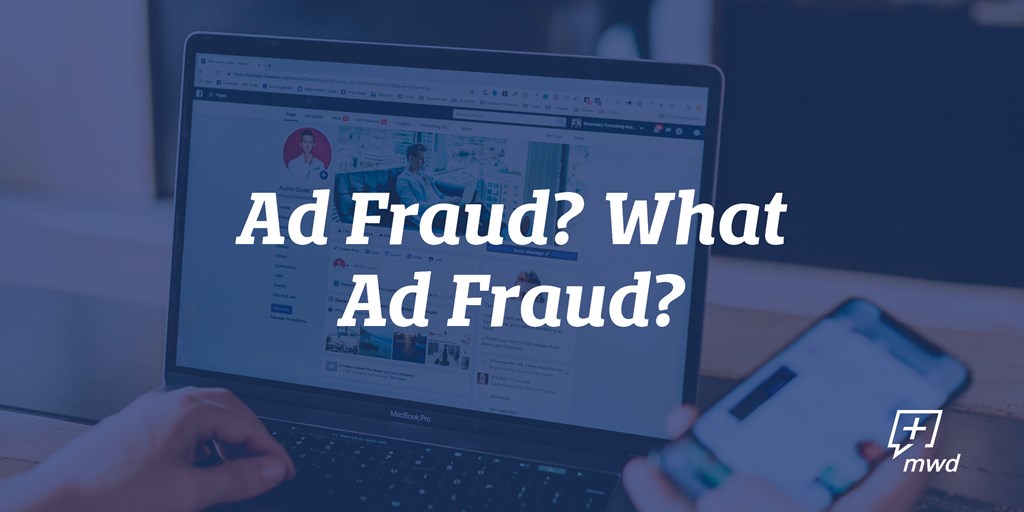How to Prevent Ad Fraud
- Target your known audience with display ads.
- Contact a data company to prospect new targets online.
- Combine your online ads with other channels such as direct mail.
It’s been about a year and a half since we originally posted this blog on Ad Fraud. I wish I had more to report, but overall, Ad Fraud remains an invasive cash drain for most online advertisers. HOWEVER, we have a few tactics that can help you get much more for your ad spend. Here’s a quick update. Dive down the page for more in-depth information on Ad Fraud.
What to do:
DO target your known audience with display ads. You can place ads on screens at the home address of your targets. All you need is your list, your artwork and total spend budget. We’ll help you calculate how many times your ad will appear on screens to those on your list.
DO contact a data company to prospect new targets online. Simply ask them to add the home IP address to your list. We can validate those to make sure you’re not wasting precious ad spend. If you need help with the list, we do that too!
DO combine your online ads with other channels such as direct mail. There’s a very special way to do this and we can walk you through it. Just know campaigns that use both generally experience a 5-9% overall lift.
DON’T give up. There are many ways to better manage your online ad spend. Call us and ask to speak with our integrated marketing team. We’ll help you understand how to stop losing money and start getting more results from your online ads
 Here's What You Can Do About Ad Fraud Today
Here's What You Can Do About Ad Fraud Today
Ad fraud is an extensive, invasive and very hot topic with marketers. Although this is a complex problem, there are a few simple steps direct marketers can take now to clean up online campaigns while still marketing to your valuable customers and prospects. While it is true there is a lot of dissatisfaction with online advertising in the market now, there are new methods you can use in your online display campaigns that are not prey to ad fraud, including using a list of home addresses or venues to both serve online ads in a very targeted way but also to capture information to use later in hyper-targeted online campaigns. Jump to our Direct Marketer's Fraud Fightin' Checklist.
What is Ad Fraud?
The estimated percent of funds spent on fraudulent activity is 10-15%. Advertisers lost an estimated $5.8 billion in ad spend in 2019 due to fraud (down from $6.5 billion in 2017), according to a report by White Ops and the Association of National Advertisers. The sources of the ad fraud — meaning those who are scooping up the dollars you or your clients are spending — are being tracked back to organizations and sites with whom neither you nor your clients, want to be affiliated.
There are two sides — and at least nine types — of ad fraud. We will focus on the advertiser's side -- as that's the battle most direct marketers must wage. This includes click fraud, traffic fraud (audience extension fraud), re-targeting fraud and more. Click, traffic, conversion and re-targeting fraud all amount to the same outcome for advertisers — you are paying for clicks or online events that were most likely completed by a bot or script. In other words, you paid to advertise to a human visiting an ad on the exchange, but what really happened was your ad was clicked by a bot before anyone saw it. Ugh.
Click Fraud
This is just what it sounds like — you pay for clicks, but the ad was clicked by a bot, not a qualified person — and certainly not a lead.
Traffic Fraud
You pay a site for X amount of impressions as you believe those site visitors fit your demographic. The site publisher may realize their own site traffic will fall short of your goal and goes out to buy traffic from sites they believe to be similar to their own. Unfortunately, third-party sites have the highest percentage of fraudulent traffic.
Re-targeting Fraud
Fraudulent operators program bots to imitate the types of consumers you are targeting (such as sports fans, new movers, tech geeks, etc). Those bots then browse relevant websites in a way that makes them look like a qualified sales prospect, including clicking on ads and filling out forms.
It's enough to make you want to eat the whole jar of cookies!
So — what's a direct marketer to do? Use our checklist to clean up your campaigns and contact us for more help with hyper-targeted online ads, then take advantage of the home address tie-in with a printed follow up.
Direct Marketer's Fraud Fightin' Checklist
- Work with a reputable service provider. There are many Targeted Display Ad service providers in the marketplace, but they are not equal. Look for key differentiators such as patented algorithms to drive their ad placements, IP and home address reporting.
- Use a provider who will give you an exact match back analysis tying your online ad (or view-through website conversion) to your visitor's exact IP and household address.
- Cut out the cookies. Many providers claim to be cookie-less, but that is usually only true at the first level. Ask your provider if cookies make up any part of their data collection, at any point in the process — including from their third-party providers. To our knowledge, only one IP targeting firm owns the patent on the technology that makes it possible to match cookie-less online ads with exact home addresses.
- Ask your provider about their security screening. Make sure you work with a provider who can thoroughly explain their security and malware discovery processes and procedures.
- Verify and validate your IP addresses against the home addresses using NCOA and standard direct mail data validation techniques. If your IP targeting provider cannot provide an exact match back, find one who can.
- Add targeted online display ads using a clean, certified list. Your ads will appear only before humans located at the IP or home addresses attached to your targets. No ad fraud. No cookies and no wasted ad spend.
Ready to clean up your campaigns? We can help with Targeted Display Ads, our own IP Targeting tool that meets all the above requirements and more. With Targeted Display Ads you can target individual households with online advertising at their IP address and mail to their home address.
Get started with your own clean online advertising campaign today.

